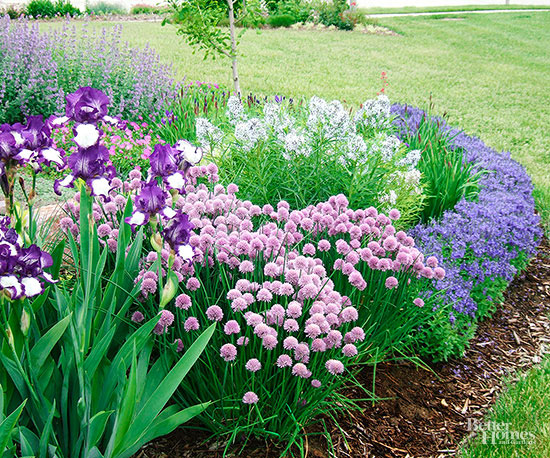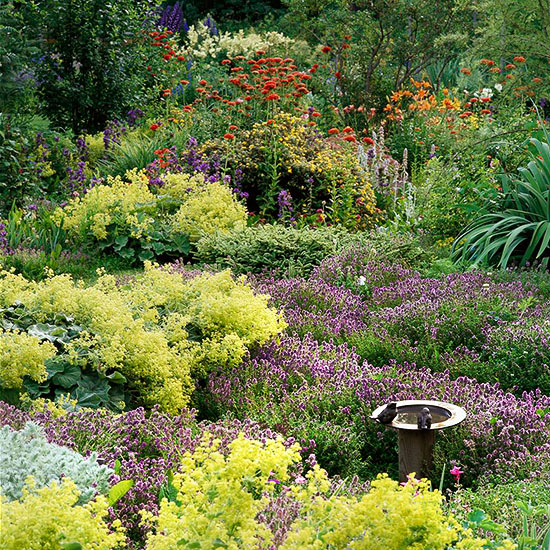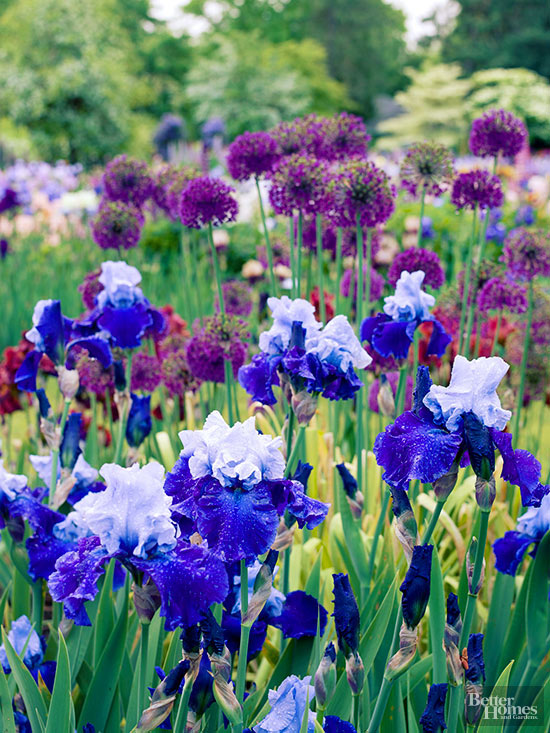






Purple spans a wide range, from deep, velvety hues that appear almost black to pale periwinkle. Red-dominated hues of purple add suspense and drama to plantings. They also mediate, bridging the gap between related colors that form dissonant matches on their own, such as red and orange. Blue-violets anchor and visually blend brighter colors.
Purple's ideal partner, yellow, invariably lightens and brightens a scene. Purple and yellow announce spring's arrival in the blooms of bulbs and pansies. Yellow helps to solidify purple, whereas purple subdues yellow. This relationship of contrasts becomes more important in shade-dappled gardens, where purple would easily melt into the shadows without yellow to clarify it. White also stabilizes purple in shade gardens.
Other colors with yellow-dominant tints also flatter and define purple. Similarly, chartreuse plants make good partners. Purple and orange placed together send the color sparks flying in a match that's sultry and sophisticated.
Related Slide Show: Best Purple Flowers for Your Garden
continue reading below
Purple rounds out many effective trios. Plant it with chartreuse and pink for a sense of depth. When blended with blues and greens, it adds substance. Purple anchors combinations of red and gold, making them appear subtle and mysterious. Purple adds weight and value in a flower border. Use it as a shading tool to separate and define other colors.
Purple-leaf plants have become a huge trend in garden design. They offer a varied and versatile palette of trees, shrubs, and ornamental grasses, as well as perennials, annuals, and ground covers. Incorporate purple-foliage plants into borders and backgrounds just as you would purple flowers to create a powerful sense of drama.

Copyright © www.100flowers.win Botanic Garden All Rights Reserved